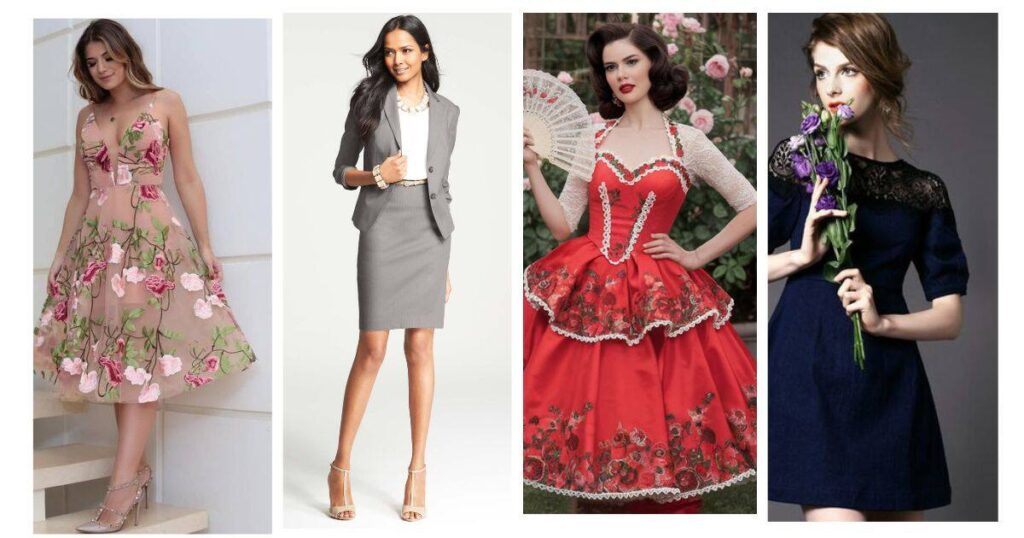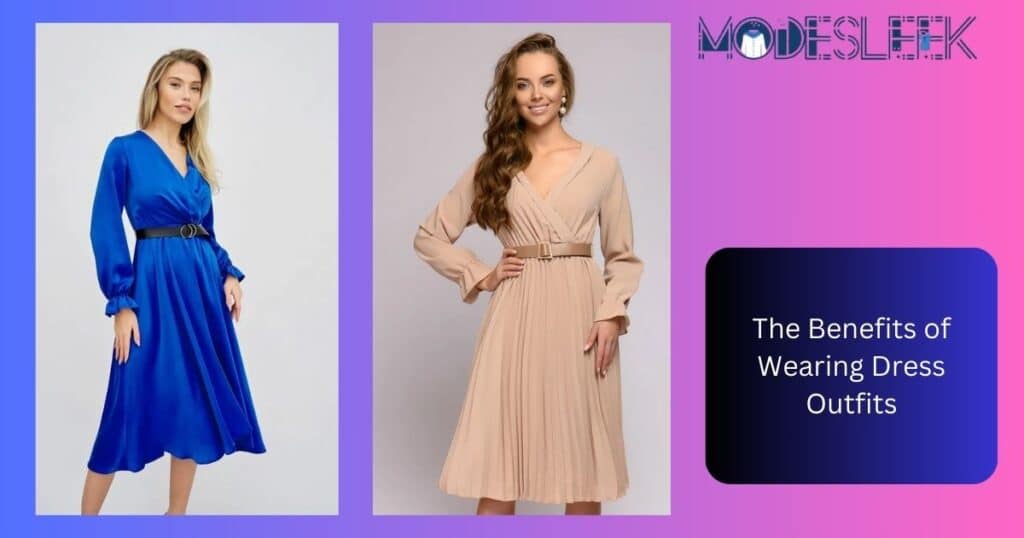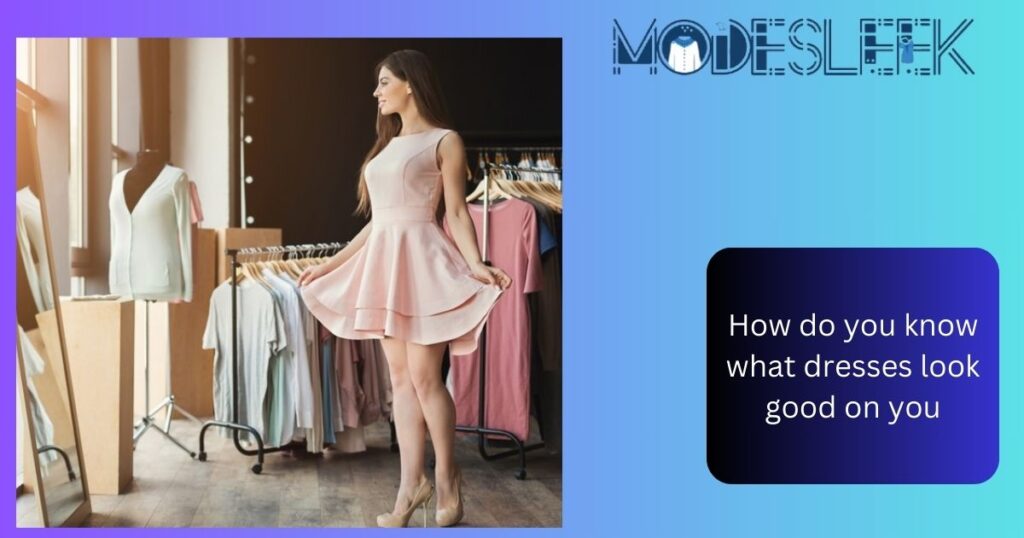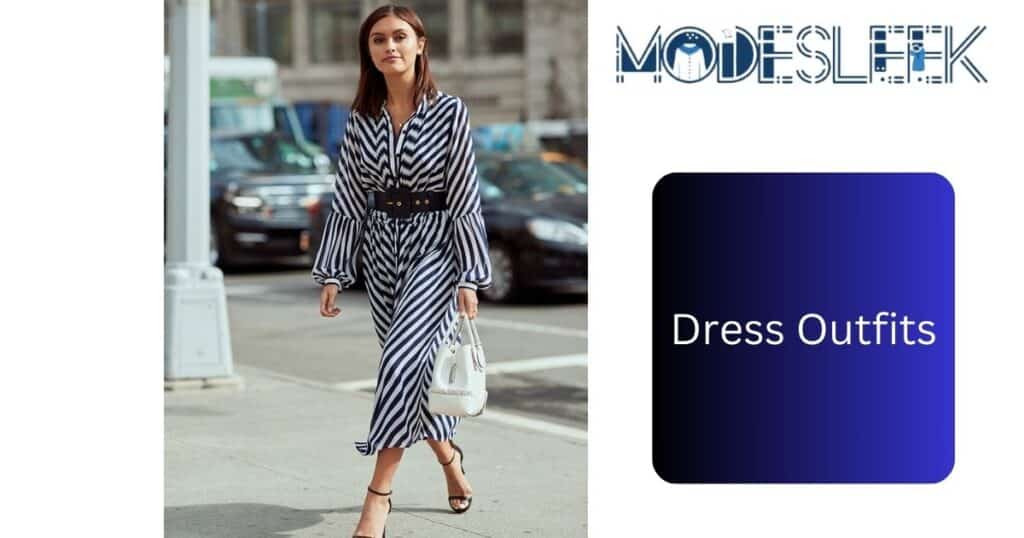A well-coordinated dress outfit can make all the difference in how you feel and how you’re perceived in various settings. Whether you’re dressing for a formal gala or a casual day out, understanding the nuances of dress outfits can help you make informed choices. In this guide, we will explore the various types of dress outfits, their categorization, the factors that influence your outfit choices, and tips on how to wear dresses effectively.
Understanding Dress Outfits
The term “dress outfit” refers to a complete look that combines a dress with other clothing and accessories, creating a cohesive appearance. This involves careful consideration of colors, patterns, textures, and proportions, as well as the art of layering, mixing, and matching. As fashion historian Caroline Rennolds Milbank notes, the evolution of dress design began with pioneers like Charles Frederick Worth, who emphasized the importance of creating visually appealing outfits.
What Constitutes a Dress Outfit?
A dress outfit isn’t just about wearing a dress; it encompasses all the elements that contribute to a unified look. This includes:
- The type of dress you choose
- Accessories such as jewelry, shoes, and bags
- Hairstyling and makeup
- The overall color palette
When choosing a dress outfit, think about how each piece works together to create the desired impression. A well-coordinated outfit can enhance your confidence and leave a lasting impression on others.
Categories of Dress Outfits

Dress outfits can be categorized based on various criteria, allowing for a more structured approach to outfit selection. Here are some common categories:
Occasion-Specific Dresses
Occasion-specific dresses are tailored to fit the requirements of particular events. Some examples include:
- Wedding Dress Outfit: Usually includes a bridal gown or formal attire suited for guests.
- Cocktail Dress Style: Ideal for semi-formal events, these dresses are typically knee-length and elegant.
- Party Dresses: Colorful and fun, suitable for social gatherings or celebrations.
- Beach Dresses: Lightweight and breezy, perfect for summer outings.
Table: Examples of Occasion-Specific Dresses
| Occasion | Dress Style | Description |
|---|---|---|
| Wedding | Bridal gown | Elegant, often white or ivory. |
| Cocktail Party | Cocktail dress | Knee-length, stylish, and festive. |
| Formal Gala | Evening gown | Floor-length, sophisticated attire. |
| Beach Outing | Maxi dress | Casual, flowy, often colorful. |
Formality Levels
Dress outfits can also be categorized by formality, which is essential for adhering to formal dress codes. Here’s a breakdown:
- Formal: Generally reserved for black-tie events, featuring elegant dresses and sophisticated accessories.
- Semi-Formal: A step below formal attire, suitable for weddings or cocktail parties.
- Casual: Relaxed outfits ideal for everyday wear or informal settings.
Understanding Formality
It’s essential to recognize the specific dress code associated with each event. For example, formal events typically require long evening gowns, while semi-formal occasions may allow shorter dresses paired with elegant accessories.
Style Categories
The style of the dress can significantly influence how you choose to create your outfit. Common style categories include:
- Classic Dress Styles: Timeless cuts and colors, often seen in A-line or sheath dresses.
- Bohemian Dress Outfits: Flowing fabrics and patterns, perfect for a laid-back vibe.
- Minimalist Dress Outfit: Simple designs that emphasize functionality and subtle elegance.
- Edgy Styles: Incorporating bold patterns or unconventional cuts for a striking appearance.
Seasonal Considerations
Another important categorization of dress outfits is based on the season. Here’s a brief overview:
- Summer Dress Outfits: Lightweight fabrics, bright colors, and sleeveless designs are ideal for hot weather.
- Winter Dress Styling: Incorporates layering with tights or cardigans, heavier fabrics, and darker color palettes.
Seasonal Dressing Guide
| Season | Dress Style | Fabric Types |
|---|---|---|
| Summer | Maxi or Sundress | Cotton, linen, rayon |
| Winter | Long-sleeve dress | Wool, jersey, heavy knits |
Factors Affecting Dress Outfits
Understanding the key factors that influence your dress outfit choices can simplify the selection process. These factors include:
Dress Fabric Types
The fabric of a dress plays a crucial role in both aesthetics and comfort. Here are some common dress fabric types:
- Cotton: Breathable and comfortable, perfect for casual outings.
- Silk: Luxurious and elegant, suitable for formal occasions.
- Polyester: Durable and versatile, often used for various dress styles.
- Linen: Lightweight and breathable, ideal for summer outfits.
Choosing the right fabric can significantly impact your comfort and the overall appearance of your dress outfit.
Dress Colors and Prints
Color and print choices can elevate your outfit and express your personality. Consider the following:
- Best Dress Colors: Neutral tones like black, navy, and beige are versatile, while vibrant colors can make a statement.
- Stylish Dress Prints: Floral patterns, stripes, or abstract designs can add visual interest and reflect current fashion trends.
Dress Length Guide
Dress length can dramatically alter the impression you create. Here’s a quick dress length guide:
- Mini Dresses: Fun and flirty, suitable for casual or party wear.
- Knee-Length Dresses: Versatile and appropriate for semi-formal events.
- Maxi Dresses: Elegant and flowy, ideal for formal occasions or summer outings.
Dress Silhouette Types
The silhouette of a dress defines its overall shape and how it fits the body. Common dress silhouette types include:
- A-Line: Flattering for most body shapes, skimming the waist and flowing out at the hem.
- Sheath Dress: Fitted and elegant, great for showcasing curves.
- Empire Waist Dresses: High waistline that accentuates the bust and flows down, ideal for creating an elongated look.
Choosing Dress Accessories
Accessories can make or break a dress outfit. Consider these tips for choosing dress accessories:
- Jewelry: Choose statement pieces or delicate items based on the dress style and occasion.
- Footwear: Heels can elevate a look, while flats provide comfort for casual settings.
- Bags: Select a bag that complements the outfit in both style and color.
The Benefits of Wearing Dress Outfits

Wearing dresses offers a myriad of advantages, from comfort to style. Here’s why you should consider incorporating more dress outfits into your wardrobe:
Improve Your Mood
Studies have shown that wearing well-fitted and aesthetically pleasing garments can significantly boost your mood. Fashion psychologist Professor Karen Pine found a direct correlation between clothing choices and emotional well-being. Wearing dresses can help you feel more put together and confident, impacting your day positively.
Stay in Style
Dresses have stood the test of time, remaining a staple in women’s fashion. With their versatility and ability to adapt to changing trends, dresses are less likely to go out of style compared to other clothing items. Designers like Coco Chanel and Christian Dior have revolutionized dress styles, ensuring that they remain a canvas for creativity.
Flatter Your Shape
The right dress can accentuate your best features while providing balanced proportions. Here are some examples:
- A-Line Dresses: Ideal for pear-shaped figures, they skim the hips while highlighting the waist.
- Sheath Dresses: Great for hourglass shapes, these dresses hug the curves and create an elegant silhouette.
- Empire Waist Dresses: Suitable for apple-shaped figures, they draw attention to the bust while providing flow below.
Dress Up or Down Easily
One of the greatest advantages of dresses is their adaptability. By simply changing accessories, you can transition a dress from casual to formal. Here are some dress up or down tips:
- Pair a simple dress with sneakers for a casual day out.
- Add heels and statement jewelry for a night out or special event.
Create More Space in Your Wardrobe
Dresses simplify your wardrobe by combining a top and bottom into one piece. This saves space and reduces the time spent coordinating outfits. With a selection of versatile dresses, you can easily mix and match with accessories to create multiple looks.
Wear Everyday
Dresses are not just for special occasions; they can be worn daily for comfort and style. With options in various comfortable dress fabrics like cotton or jersey, you can find dresses that allow for freedom of movement without compromising on style.
How to Incorporate More Dresses into Your Daily Life
If you want to wear more dresses in your daily routine, consider these practical tips:
Opt for Versatile Styles
Choose dresses that can easily transition from day to night. Look for breathable fabrics and designs that work for various occasions. A simple sheath dress in a neutral color can be dressed up or down effortlessly.
Experiment with Different Styles
Try out various dress style categories to discover what suits your personality and lifestyle best. Whether it’s a bohemian dress outfit for a weekend brunch or a classic dress style for work, don’t hesitate to mix it up.
Pair with Casual Footwear
Select dresses that can be paired with your favorite casual footwear, like ballet flats or sneakers. This makes daily wear more comfortable while maintaining a stylish appearance.
Dress for Yourself
Dressing for yourself means prioritizing your comfort and personal style over trends or others’ opinions. Choose outfits that reflect who you are and make you feel confident. Embrace your uniqueness and wear what resonates with your personality.
Introduce dresses to your wardrobe gradually
To introduce dresses into your wardrobe gradually, start by incorporating versatile, everyday styles like simple A-line or sheath dresses. Pair them with your favorite accessories for a seamless transition. Experiment with different fabrics and silhouettes to discover what suits your personal style best.
How do you know what dresses look good on you

Determining what dresses look good on you involves understanding your body type, personal style, and individual preferences. Here are some key steps to help you find the best dress for your figure:
- Know Your Body Shape: Identify your body shape (hourglass, pear, apple, rectangle, or inverted triangle) and research which dress styles flatter your proportions. For example, A-line dresses work well for pear shapes, while sheath dresses can enhance an hourglass figure.
- Consider Your Best Features: Highlight your favorite features with the right dress style. If you love your waist, opt for dresses with defined waists or empire waist dresses. If you prefer to accentuate your legs, choose shorter hemlines.
- Trust Your Personal Style: Stay true to your aesthetic. Whether you lean toward bohemian, classic, or minimalist styles, select dresses that resonate with your personal taste. Don’t feel pressured to follow trends that don’t feel authentic to you.
- Experiment with Colors and Prints: Explore various colors and prints to see what complements your skin tone and hair color. Best dress colors can enhance your overall appearance. Try vibrant prints for a playful look or solid colors for a more sophisticated vibe.
- Try Different Fabrics: Pay attention to dress fabric types, as they can impact the fit and comfort of a dress. Opt for comfortable dress fabrics that allow for ease of movement and suit the occasion.
- Check the Fit: Always try on dresses before purchasing. Ensure they fit well in key areas like the shoulders, waist, and bust. A well-fitted dress is more flattering and comfortable to wear.
- Seek Feedback: Don’t hesitate to ask friends or family for their opinions when trying on dresses. Sometimes, an outside perspective can help you see what looks great on you.
What is the best dress for an outfit
The best dress for an outfit is one that seamlessly blends style, comfort, and versatility. A classic sheath dress in a solid color, such as navy or black, is an excellent choice as it flatters various body shapes and can easily transition from day to night. Consider a knee-length hemline for a balance of elegance and practicality, making it suitable for both formal and casual occasions.
Additionally, select a dress made from comfortable, breathable fabrics like cotton or jersey to ensure all-day wearability. Look for minimal design features to allow for easy accessorizing, enabling you to dress it up with heels and statement jewelry or down with flats and a cardigan. Ultimately, the best dress enhances your personal style while fitting the context of the occasion. Remember, confidence is key; wear what makes you feel your best.
FAQS
What types of dress outfits are appropriate for formal events?
Formal events typically call for elegant dresses such as ball gowns, floor-length evening gowns, or sophisticated sheath dresses. Look for styles in luxurious fabrics like silk or satin, and consider incorporating dress accessories like statement jewelry and elegant heels to elevate the look.
How can I determine the best dress style for my body shape?
To find the best dress style, identify your body shape—such as hourglass, pear, apple, rectangle, or inverted triangle. Research dress styles that flatter your shape; for example, A-line dresses suit pear shapes, while fitted dresses complement hourglass figures. Experiment with different styles to see what makes you feel confident.
Can I wear summer dresses in winter?
Yes, you can wear summer dresses in winter by layering! Pair them with thermal tights or leggings, add a long-sleeved shirt underneath, and layer with a stylish coat or cardigan. Accessorize with warm scarves and boots to create a chic winter look while staying warm.
How do I choose the right accessories for my dress outfit?
When choosing dress accessories, consider the dress style, occasion, and your personal taste. For formal occasions, opt for statement jewelry, a clutch, and elegant heels. For casual dresses, go for simpler accessories like a crossbody bag and comfortable flats. Aim for balance; if your dress is bold, keep accessories minimal.
What is the difference between casual and semi-formal dresses?
Casual dresses are relaxed and comfortable, suitable for everyday wear, often made from lightweight fabrics and featuring fun prints. In contrast, semi-formal dresses are dressier and may include knee-length styles or sophisticated designs in higher-quality materials, appropriate for events like weddings or cocktail parties.
Conclusion
In conclusion, mastering the art of dress outfits can significantly enhance your personal style and boost your confidence in any setting. By taking into account essential factors such as occasion, body shape, and individual preferences, you can curate a versatile wardrobe that allows for endless combinations. Remember, the best dress outfit is one that not only suits your body type but also resonates with your personal aesthetic.
Embrace the diversity of styles and fabrics, and let your creativity shine through as you experiment with different looks. Ultimately, wearing dresses should be a joyful experience, enabling you to express your individuality while feeling comfortable and stylish.Whether you’re dressing up for a special occasion or opting for a casual day out, a well-chosen dress outfit can make all the difference in how you present yourself to the world.

Lily Rose is an experienced website content writer with over 5 years of expertise in crafting engaging and informative content. She runs her personal blog, sportrevup.com, where she shares insights and updates on a variety of topics. Lily is dedicated to delivering high-quality content that captivates and informs her readers.







